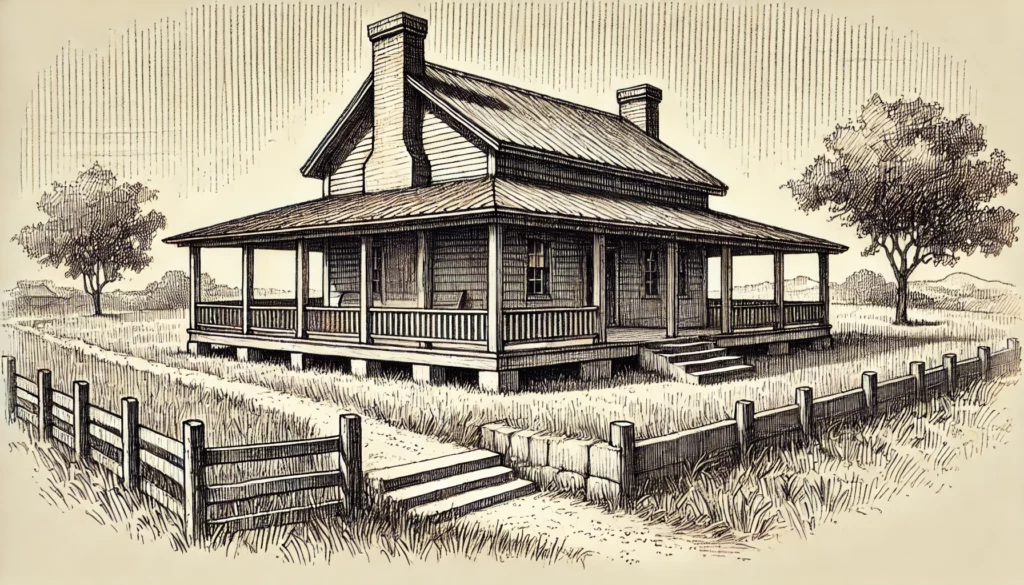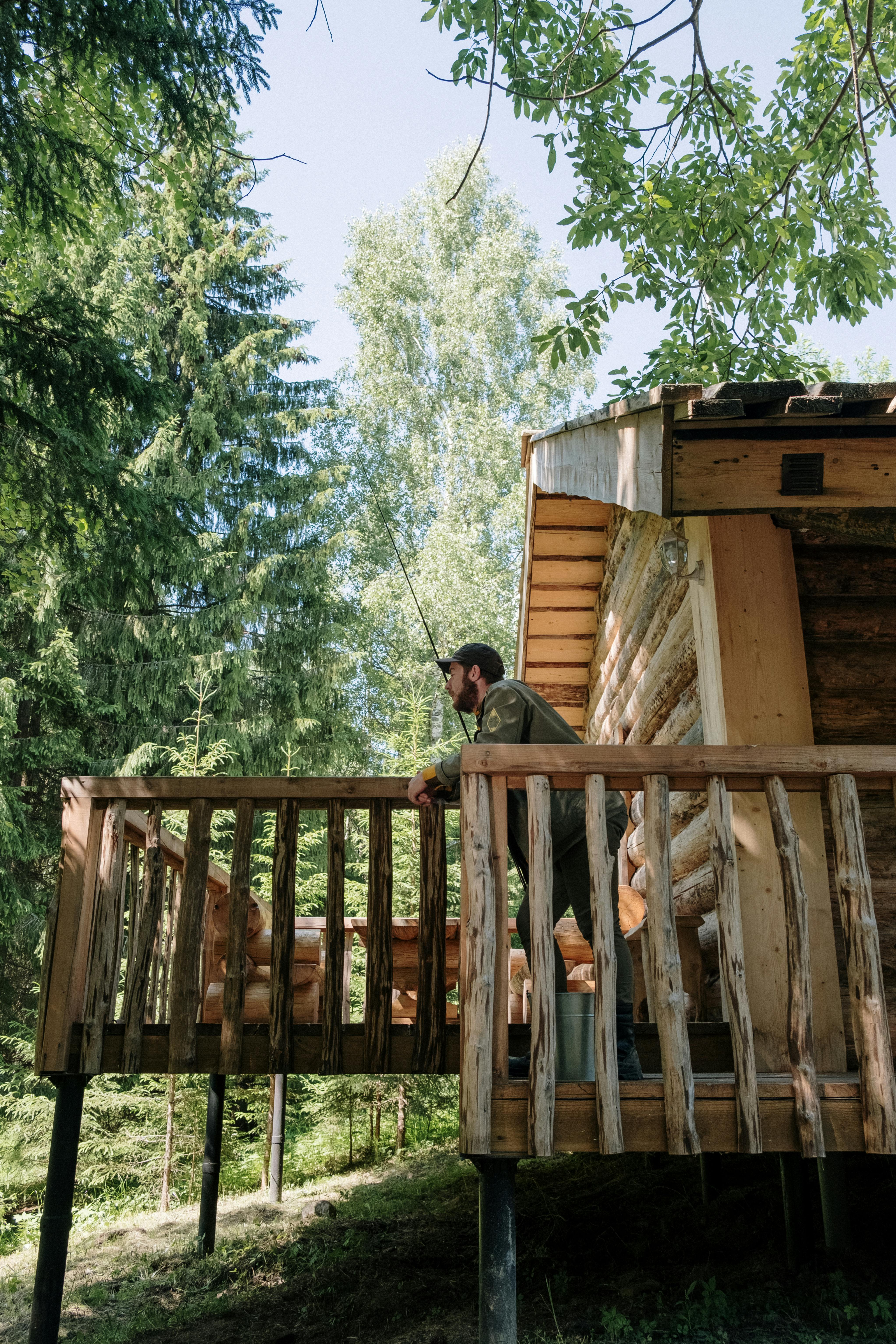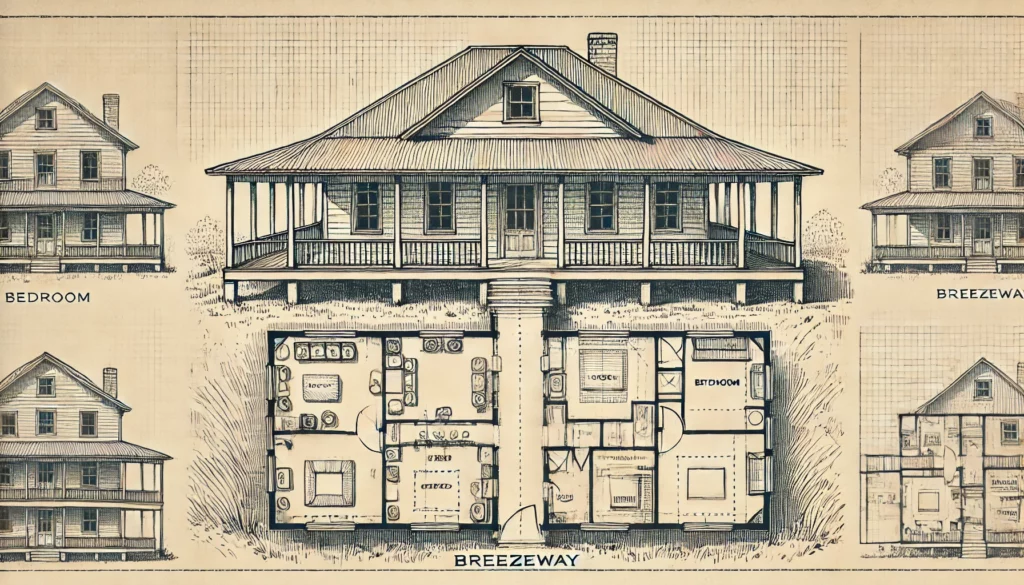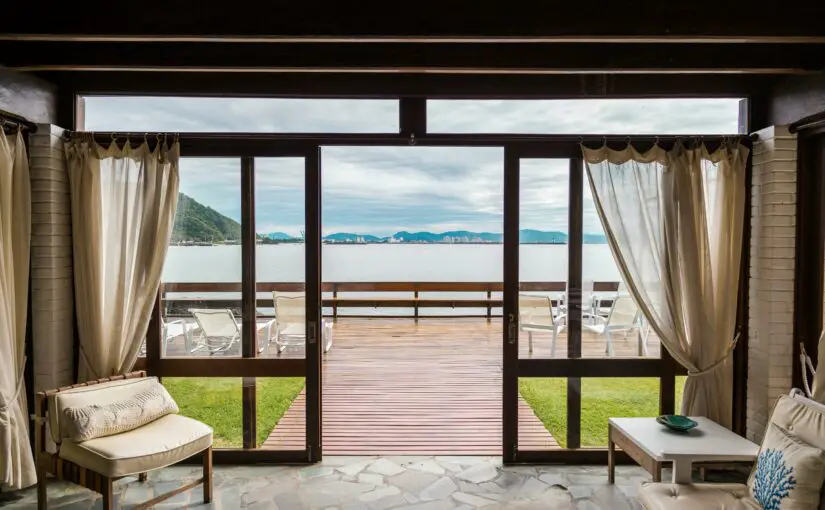Dogtrot houses, a once-common architectural style in the American South, are experiencing a resurgence in modern home design. Traditionally, these homes featured a central breezeway, or “dogtrot,” that separated two enclosed living spaces while providing natural ventilation and shade. This architectural approach was particularly suited to warm and humid climates, where maximizing airflow reduced reliance on artificial cooling methods.
Today, architects and designers are reinterpreting the dogtrot concept with contemporary materials, sustainable features, and new functionalities that align with modern living. One of the most significant advantages of dogtrot homes, aside from their environmental benefits, is their hygienic potential. The natural ventilation of these homes offers a practical design feature for those considering quarantine-friendly housing solutions.
A Brief History of Dogtrot Homes
The dogtrot home emerged in the early 19th century as a practical response to the heat and humidity of the southeastern United States. The design typically consisted of two log cabins or rooms joined by a covered, open-air passage. This central breezeway allowed air to circulate freely, keeping interiors cool even in extreme temperatures. The term “dogtrot” is believed to have originated from the observation that dogs would often trot through the open breezeway to escape the sun. (Tennessee Encyclopedia)

One notable variation of this style is the saddlebag house, which evolved by enclosing the breezeway into a continuous living space while still maintaining some of the original airflow principles.
The Revival of Dogtrot Design in Modern Homes
In recent years, architects have revisited dogtrot homes, modernizing the concept with cutting-edge materials and sustainable innovations. These homes now incorporate features such as:
- Advanced Insulation Materials: SIPs (Structural Insulated Panels) and eco-friendly insulation improve energy efficiency while maintaining the home’s open structure.
- Sustainable Building Materials: Reclaimed wood, steel, and glass reduce environmental impact while preserving the home’s aesthetic appeal.
- Enhanced Airflow Solutions: Large retractable glass doors, adjustable louvers, and ceiling fans optimize natural ventilation.
- Smart Home Technology: Automated window shades, humidity sensors, and energy-efficient HVAC systems complement the traditional passive cooling system of dogtrot homes.
By integrating modern materials, these homes maintain their historical charm while adapting to contemporary needs.
Hygienic Benefits of the Dogtrot Design
One of the most overlooked yet essential aspects of dogtrot architecture is its potential for hygienic and health-conscious living. The separation of living spaces by a breezeway provides a unique advantage in situations where occupants need to isolate due to illness, allergies, or other health concerns.

1. Natural Air Circulation Reduces Stale Air
Traditional homes often trap pollutants, allergens, and stale air within enclosed spaces. Dogtrot houses, by design, facilitate continuous airflow, reducing the accumulation of indoor pollutants, dust, and mold. The cross-ventilation effect helps flush out airborne pathogens, making the home healthier for its residents.
2. Ideal Quarantine-Friendly Housing
During the COVID-19 pandemic, many homeowners and architects began to reconsider housing layouts that could accommodate self-isolation more effectively. A dogtrot home naturally separates living quarters while maintaining an open, airy atmosphere. If a family member falls ill, one side of the house can be designated as a quarantine zone, limiting contact while ensuring ample fresh air supply.
3. Reduction of Odors and Airborne Contaminants
Households often face issues with lingering odors from cooking, pets, or chemicals used in cleaning products. The open design of a dogtrot house mitigates this problem by allowing constant air exchange. This airflow helps disperse odors more effectively than in closed-concept homes, keeping the indoor environment fresher and more comfortable.
Energy Efficiency and Sustainability
Dogtrot architecture is inherently eco-friendly, reducing reliance on air conditioning while maximizing natural climate control. Below are some of the key sustainability benefits:
1. Lower Energy Consumption
By optimizing passive cooling, dogtrot houses significantly cut down on energy usage. Homes in warmer climates, where air conditioning is a major expense, benefit greatly from this natural cooling method.
2. Use of Recyclable and Locally-Sourced Materials
Many modern dogtrot houses are built using sustainable resources such as reclaimed wood, bamboo, and metal. Not only does this minimize environmental impact, but it also reduces transportation costs associated with imported materials.
3. Integration with Solar Power
The layout of dogtrot homes provides excellent opportunities for solar panel installation. With large roof spaces and open courtyards, homeowners can easily incorporate renewable energy sources to further reduce their carbon footprint.
Contemporary Examples of Dogtrot Homes
Several architects have successfully modernized the dogtrot concept, showcasing its adaptability for 21st-century living. Here are some notable projects:
| Project Name | Location | Key Features |
|---|---|---|
| Hog Pen Creek Residence | Austin, TX | Breezeway with retractable doors, energy-efficient design |
| Whidbey Dogtrot House | Whidbey Island, WA | Sustainable materials, passive cooling strategy |
| Dogtrot Mod Cabin | Rural Kentucky | Minimalist approach, solar-powered, modern insulation |

Conclusion
The dogtrot house exemplifies how traditional design can be reimagined for contemporary needs. By integrating modern materials, smart home technology, and sustainable practices, architects are reviving this historic form in innovative ways. Beyond its energy efficiency and aesthetic appeal, the dogtrot design stands out for its hygienic advantages, providing a naturally ventilated, healthier living space that supports well-being and adaptability.
References
- Tennessee Encyclopedia: https://tennesseeencyclopedia.net/entries/vernacular-log-type-houses/
- EPA: https://www.epa.gov/indoor-air-quality-iaq
- CDC: https://www.cdc.gov/coronavirus/2019-ncov/prevent-getting-sick/how-covid-spreads.html
- NIH: https://www.ncbi.nlm.nih.gov/articles/PMC8146370/
- Architizer: https://architizer.com/blog/inspiration/collections/dogtrot/
